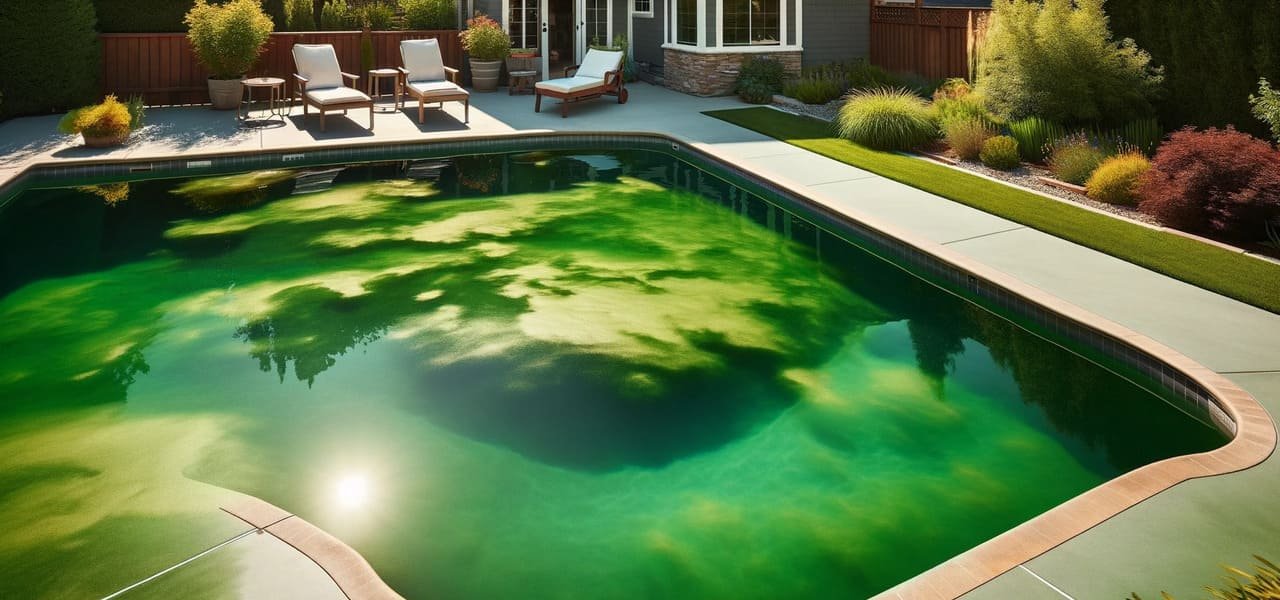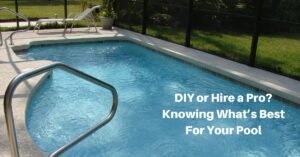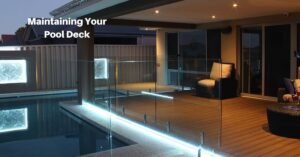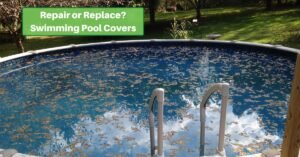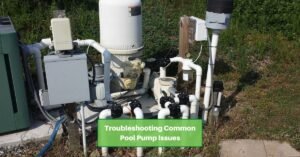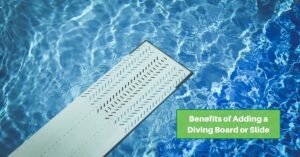Last summer, when we uncovered our pool for the season’s first swim, we were greeted not by the inviting blue waters we anticipated but by an unwelcome green tint shimmering beneath the surface. Our first encounter with pool algae was a harsh reminder that pool ownership comes with its fair share of challenges.
Algae, a seemingly benign foe, transformed our backyard oasis into a less-than-appealing lagoon overnight—and that’s only slightly exaggerated! This experience propelled us to understand and combat pool algae, a journey we’re eager to share with fellow pool owners.
What Is Pool Algae?
Algae are microscopic plants that thrive in aquatic environments, including our cherished swimming pools. Favoring warm temperatures, ample sunlight, and stagnant waters, algae can proliferate rapidly, turning clear pool water into a murky mess in days. While algae are not harmful to swimmers, their presence can indicate imbalances in pool chemistry that may harbor other unwanted pathogens.
The most common types of pool algae are:
- Green Algae: The most prevalent form, easily identifiable by its green color. It can float in water or cling to walls and is relatively easy to treat.
- Black Algae: More stubborn and more challenging to eradicate, black algae root deeply into pool surfaces, forming protective layers that make treatment challenging.
- Mustard Algae: Resembling sand or dirt, mustard algae cling to pool walls and floors, often mistaken for pollen or sand because of its yellowish-brown color.
Prevention Strategie
The adage ” an ounce of prevention is worth a pound of cure” rings especially true regarding pool algae. Maintaining a clean, well-balanced pool is the first line of defense against algae invasions. Here are some key prevention strategies:
- Regular Maintenance: Ensure your pool’s filtration and circulation systems are in optimal working order. Stagnant water is a breeding ground for algae, so running your pool pump for at least 8-12 hours a day during peak swimming season is crucial.
- Chemical Balance: Keep your pool’s chemistry within the recommended levels. Regularly testing and adjusting the pH, alkalinity, and sanitizer levels can drastically reduce the likelihood of algae growth.
- Physical Cleaning: Brush and vacuum your pool regularly to remove debris and algae spores before they have a chance to grow. This is an excellent opportunity to involve the whole family in pool care, assigning tasks that even the younger members can handle, such as skimming the water’s surface.
DIY Treatment Options
For those minor algae outbreaks that inevitably occur despite our best efforts, several DIY treatment options can help restore your pool’spool’s clarity and health:
- Shock Treatment: A high dose of chlorine, known as shocking, can effectively kill algae. Follow the instructions carefully and keep swimmers out of the pool until the chlorine levels return to normal.
- Algaecides: Available at pool supply stores, algaecides can be effective against algae when used as directed. Opt for products with fewer harsh chemicals to minimize environmental impact.
- Natural Solutions: For a more eco-friendly approach, consider natural enzymes that break down organic matter, including algae. These products are safe for swimmers and the environment, offering a gentle yet effective treatment option.
When to Call the Professionals
Despite our best efforts, pool algae can sometimes be a stubborn adversary, persisting despite initial treatment attempts or covering a pool in a way that feels overwhelming to address alone. In these moments, knowing when to call in professional help can save time, frustration, and, potentially, the health of your pool.
Persistent Algae Issues: If algae reappear despite thorough cleaning and chemical treatment, it may indicate underlying issues that require professional attention. Experts can assess your pool’s system for weaknesses and recommend more effective solutions.
Large-Scale Infestations: When algae cover a significant portion of your pool, professional-grade equipment and chemicals may be necessary to restore its condition effectively. Pool professionals can access more potent treatments not typically available to the average homeowner.
Safety and Efficiency: Handling pool chemicals, especially in large quantities needed for severe algae outbreaks, can be hazardous. Professionals are trained in safely handling and applying these chemicals, ensuring the job is done safely and effectively.
Selecting a reputable pool maintenance service is crucial. Look for companies with positive reviews, proper credentials, and a willingness to provide references. Feel free to ask questions about their treatment approach and the products they use, especially if you’re concerned about environmental impact.
Maintaining a Healthy Pool Environment
Long-term prevention of pool algae requires regular maintenance and a proactive approach to pool care. Here are some strategies to keep your pool inviting and algae-free:
- Consistent Water Testing: Regularly testing your pool’s water chemistry is essential. Changes in pH or chlorine levels can create a hospitable environment for algae. Adjustments should be made promptly to keep everything in balance.
- Seasonal Considerations: As seasons change, so do the needs of your pool. Warmer temperatures may necessitate more frequent chemical adjustments and filtration. Be prepared to adapt your maintenance routine accordingly.
- Educate and Involve: Pool care should be a shared responsibility. Educating family members about the importance of pool maintenance, including its role in preventing algae, fosters a collective effort to keep your pool pristine. Simple tasks like rinsing off before swimming can significantly reduce the introduction of contaminants.
The Joy of a Clean Pool
Reflecting on our initial encounter with pool algae, what stood out most was not the challenge it presented but the satisfaction and relief that came with restoring our pool to its sparkling state. The experience underscored the importance of vigilance, regular care in maintaining a pool’s health, and the undeniable joy of a clean, clear swimming environment. Yes, it’s a chore, but it’s so much easier to do, knowing the benefits we reap!
Algae in the pool is more than just an aesthetic issue; it’s a call to action, a reminder of the delicate balance required to keep our aquatic havens safe and enjoyable. By adopting a comprehensive approach to prevention, treating outbreaks promptly, and recognizing when professional help is needed, we can ensure our pools remain the centers of summer fun and relaxation they’re meant to be.

